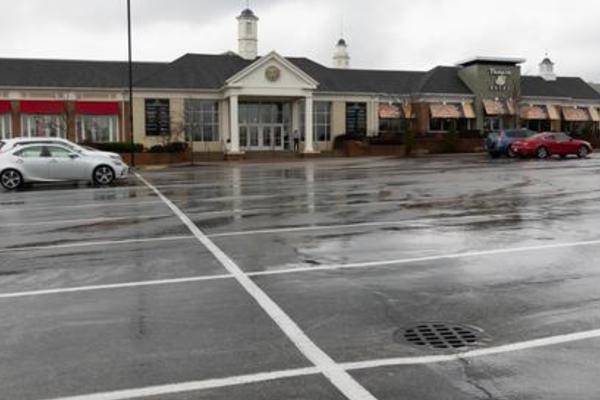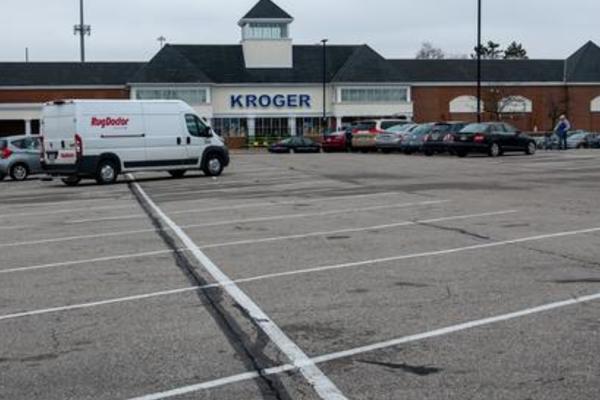Monday,
March 15, 2021
9:30am
As the City of Worthington considers the proposed redevelopment of the Shops at Worthington Place, take a look back at the six-decade history of Worthington's mall.
The story of the mall in Worthington is in many ways reflective of the greater trends of shopping malls throughout the United States. Beginning with the first enclosed shopping center, the Southdale Center in Edina, Minnesota that opened in 1956, malls sprouted up around the country as a place for suburban shoppers to congregate. This expansion continued until the 2000s, when the fortune of these shopping meccas began to decline.
In 1959, just three years after the opening of the Southdale Center, the future of Worthington's own mall had begun to take focus. The area of land the mall would occupy was then owned by dairy operator Everett Antrim. (Antrim is a well-known name in the Worthington area to this day, thanks to the family's donation to Columbus Recreation and Parks of the nearly 120 acres that became Antrim Park.)
The future mall site was located west of High Street and south of West Old Wilson Bridge Road-- which, at the time, was the only West Wilson Bridge Road. In July 1959, Worthington City Council voted to rezone the land from agricultural and single-family designation to commercial, multi-family and two-family classification. According to a July 30, 1959 "Worthington News" article, the vote took place in an "overflow session at the local municipal building" and followed months of debate in the community. Opponents had distributed notices to residents warning the rezoning would "draw traffic for 50 miles, crowd your streets, overload your schools and deplete the value of your property and ruin the community." Proponents claimed the warning notices were "just a scare," and served only to boost other nearby shopping centers, such as Graceland.
A citizens' petition successfully got a referendum on the November 1960 ballot and, on November 8, Worthington residents soundly rejected, by a nearly two-to-one vote, the ordinances that would have rezoned the land to allow commercial, two- and multi-family buildings. The land thus reverted to its original agricultural and single-family zoning.
The issue was not over, however. Throughout the 1960s, City Council and the Municipal Development Commission carefully considered the future of the site. The "Worthington News" reported on the controversial issue, with an October 26, 1967 article explaining that several public hearings in 1966 drew "so many spectators that meetings were held in the high school gym, the east auditorium and the shelter house." On August 22, 1966, Council turned down a development proposal, as the city's zoning laws at the time didn't include a planned commercial development category that would provide necessary safeguards. With the passage of new zoning ordinances, however, City Council at last approved the site for development of a shopping center on October 23, 1967.
The site developer was the Columbus-based Planned Communities, Inc., and construction began in 1970 with the installation of the new, four-lane West Wilson Bridge Road to replace the two-lane road we now know as West Old Wilson Bridge Road. An August 13, 1970 "Worthington News" article describes the progress of the $225,000 road project, which was completed entirely at the expense of Planned Communities, Inc. The article goes on to describe the remaining work to be done: six office buildings, a shopping center and houses for a total of $23 million. The September 24, 1970 "Worthington News" reports: "Single family dwellings are presently under construction in the Olentangy Hills subdivision, which overlooks the Olentangy River and the adjacent City of Worthington park area."
On September 27, 1971, City Council approved final plans for the shopping center itself, and just over a year later, on October 29, 1972, the Worthington Square Shopping Center opened its doors for the first time. A story in the November 2, 1972 "Worthington News" describes the official ribbon cutting of the $2 million, 57,000 square foot facility, which took place at the entrance to the new Kroger store and featured Worthington Mayor James Lorimer and other city officials, along with representatives from Kroger. Other stores opening that day were Cochran Pharmacies, Swan Cleaners, The Toy Box, Cassano Pizza King, Natural Foods, Little Professor Book Center, Lair's Hallmark Center and Oriental Specialties.
Phase two of the mall was just around the corner. In its August 23, 1973 edition, the "Worthington News" previewed the next phase with an architect's drawing of the portion with the steeple that greets shoppers at the mall's southernmost edge. The $3 million project, consisting of 30 boutiques and shops in 83,000 square feet of tenant space, was completed in 1974. An advertisement in the December 21, 1975 "Columbus Dispatch," lists the shops then at the mall, with stores selling records, fabrics, sporting goods, pet supplies and eyeglasses. The ad also mentions stores coming soon, including a cinema.
Worthington Square's next big change came in 1984, when a year-long project to enclose the open-air mall was completed. On November 8, the "Worthington News" touted the mall's upcoming grand reopening, which would include a black-tie cocktail reception and silent auction, breakdancers, a double-dutch jump rope team, a nine-piece orchestra, clowns, choirs and a variety of Columbus Zoo animals. Among the new additions and changes were a "spectacular glass domed atrium with an 18 ft. high fountain; skylights along the mall corridor; new store fronts and lighting; completely re-tiled flooring; and a new clock and chimes added to the center's distinctive bell tower."
While the developer, Planned Communities, had owned Worthington Square from the beginning, in 1988, Aetna Life and Casualty became co-owner. Planned Communities wished to focus on newer projects, however, and ownership was fully turned over to Aetna in 1991, with Hill Partners hired to manage the mall. That year, the name was changed to simply "Worthington Mall." This was to herald a series of changes in owners and names for the center over the next three decades. And with newer and larger shopping centers being built in Columbus, the mall would struggle to differentiate itself. A March 28, 1990 article in the "Worthington News" highlighted the center's focus on upscale shopping, which store owners felt kept the mall competitive with the new Columbus City Center, a three-story mall that had opened in downtown Columbus the year before.
In 1997, Columbus Retail, a Texas-based firm doing business in Columbus, bought Worthington Mall for $24 million and, in 2002, Carpenter & Company took over mall management. The new managers changed the name back to "Worthington Square" in 2005. As explained in a January 13, 2005 "This Week in Worthington" article, the previous management company had changed the name to "Worthington Mall" in a bid to compete with regional malls. The new owners felt the mall's base was more local, and that "Worthington Square" still had great name recognition.
In the 2000s, with shopping increasingly moving online, the fortunes of the "great American mall" declined steeply. Worthington Square was no exception, although after a flurry of changes, the facility rallied somewhat. In 2006, Kroger bought the land on which it's located and expanded the store west. In October of that year, CB Richard Ellis took over as property manager of the mall, and some long-awaited renovations failed to materialize. Another change in ownership came in 2008, when General Electric Financial bought the mall. By the time Texas-based Morris-Floyd Capital partners and Tom Carter bought Worthington Square two years later, occupancy was at 40 percent. Carter, a Worthington resident and developer of Easton Town Center, had plans to make the mall a more inviting place, and the new owners would go on to spend $10 million renovating the property, renaming it "The Shops at Worthington Place" in 2011. More than a dozen new stores and restaurants opened in 2012, including Pies & Pints, Panera Bread, Orvis and Swan Cleaners. When the mall was sold again, in December 2019 to Dallas-based Direct Retail Partners, it was at 92 percent occupancy.
The future of malls in the U.S. was grim, however, even before the COVID-19 pandemic drove shopping even more firmly online. A 2017 Credit Suisse report predicted one in four U.S. malls would close by 2022. A January 21, 2020 "Columbus Dispatch" article shone a local light on the issue when it quoted David Watson, president and CEO of Direct Retail Partners, as saying, "Nothing is really wrong with the [Worthington] mall, but the world has moved away from simple enclosed malls." The company pointed out, in a September 20, 2020 "This Week Worthington News" article, that retailers in the mall's western portion, and those with interior access only, struggled with dismal performance.
As of early March 2021, the City of Worthington is considering a proposal from Direct Retail Partners to redevelop The Shops at Worthington Place into a mixed-used space rebranded as High North. Possible plans include demolishing portions of the mall and renovating others, constructing a pedestrian promenade, reconfiguring access drives and constructing a six-story office/mixed use building on the southern portion of the site. With its prime location next to state Route 23 and I-270, the spot is ideal for revitalization, and hopefully will continue to reflect the best interests of the city for decades to come.




